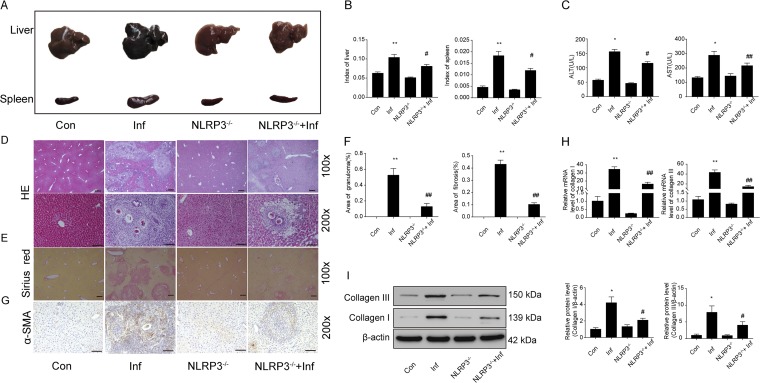FIG 1.
The NLRP3 inflammasome has a crucial role in schistosoma-induced liver injury. Wild-type and NLRP3−/− mice were percutaneously treated with or without 30 ± 2 S. japonicum cercaria. At 6 weeks postinfection, hepatic pathological lesions were analyzed. (A) Gross appearance of the liver and spleen of control (Con), infected (Inf), NLRP3−/−, and NLRP3−/− infected (NLRP3−/−+Inf) mice. (B) Liver and spleen indexes. (C) Serum levels of ALT and AST measured with a biochemical analyzer. (D) H&E staining of liver sections. Original magnification, ×100 or ×200; scale bars, 125 μm or 250 μm, respectively. The granulomatous area as a percentage of the total area was measured by computer-assisted morphometric analysis. (E) Sirius red staining for collagen content and distribution. Original magnification, ×100; scale bars, 125 μm. (F) Quantitative changes in granulomatous and fibrotic areas measured by computer-assisted morphometric analysis. (G) Representative immunohistochemistry images of α-SMA in liver tissue. Original magnification, ×200; scale bars, 250 μm. (H and I) Quantification of collagen I and collagen III mRNA and protein levels. Data are mean ± SEM of 6 mice/group. *, P < 0.05 versus control; **, P < 0.01 versus control; #, P < 0.05 versus infected; ##, P < 0.01 versus infected.

